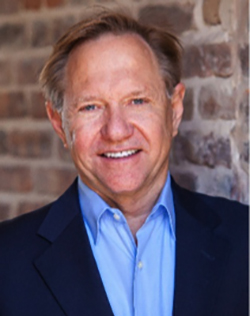An essential reading list
- November 2, 2016
- / Shannon Nickinson
- / training-development

Quint Studer
Thank you all for the feedback on this column the last few months. Your words, letters and e-mails have been especially rewarding.
I’ve heard from people in supervisory roles ready to try new tactics with their employees. I’ve heard from a wide spectrum of people — from experienced leaders to hourly workers.
I even received a note from a person who cuts out my articles and is creating a scrapbook for her grandchildren. It’s flattering to have your message resonate with people this way. Thank you.
The real legacy a person leaves behind is those they teach. Thank you to the Pensacola News Journal for allowing me this “classroom” to feed my desire to teach and help small businesses all over the region.
This week I wanted to address a frequent question: What books do I recommend?
I typically need books that are prescriptive with “how-to’s” included. Usually, I can figure out the “why” or the goal, but what I need most is the steps to take to get there.
These change as new material surfaces, but here’s my short list of recommended business books.
What They Don’t Teach you at Harvard Business School by Mark McCormack. I did not have a degree in business, so early in my career I was concerned I was not smart enough to be successful. This book helped me see that I could be successful by putting very practical tips into practice. These tips are part of the recipe to build a career and a business.
In Search of Excellence: Lessons from America’s Best Companies by Tom Peters. One stop in my career was in Janesville, Wisc., and a library there showed a film by Tom Peters based on this book. The presentation helped me build confidence and was loaded with how-to’s that were vital to my understanding.
The Seven Habits of Highly Effective People by Stephen Covey. This book helped me with goal-setting, prioritization and time management.
Built to Last by Jim Collins. When my career took me to Chicago, I was so fortunate this book came out. This isn’t Collins’ biggest seller, but it is my favorite. It is well researched due to his college teaching background and it clearly outlines why companies last and why others don’t.
One line always sticks with me: Research showed that every company will hit times when they must choose between their values and their revenue. Those that chose revenue don't make it long term or never reach their potential.
Those companies that chose values may take a short-term financial hit, but they do much better long term. They last.
It also points out how top leadership fall into the trap of rationalizing — for example, not taking action on a leader who generates a large amount of revenue but does not live the company’s values. The workforce sees the hypocrisy and it creates a chasm between employees, the leader and the organization. A “do as I say, not as I do” culture just does not work.
Good to Great by Jim Collins. This was a blockbuster bestseller and identifies the characteristics great companies have.
Leading Change; A Sense of Urgency both by John Kotter. These two books are must-reads if an organization is changing and the urgency needs to be heightened.
Switch: How to Change Things When Change is Hard by Chip and Dan Heath. On the topic of change, this book is very helpful. It emphasizes the fact that less is more. Breaking change into smaller segments helps with execution and impact.
The E-Myth Revisited by Michael Gerber and Originals by Adam Grant. These are must read books for any startup or small business that wants to grow and last. (Which means everyone.) E-Myth shows that every company must have standard operating procedures.
Originals notes that the more open leaders are to ideas and feedback, the better the culture and results. I particularly liked how the author provides specific examples of leaders and the ways they create that feedback-rich culture.
Traction by Gino Wickman. Both Susan Campbell from Susan Campbell's Jewelry and Jason Crawford of IRIS are using this book as a guide for making sure their workforces are connected to the organization’s mission, vision, values, tactics and standard operating procedures. I have it. Now it’s time to read it.
For readers out there, you now know how much I like to hear from you. If you have a book that has helped you, please send the title and how it impacted you. I enjoy being the teacher, but I also would love to be your student.
 CivicCon launches with a look at good growth in cities
CivicCon launches with a look at good growth in cities
 Building stronger brains one baby, one parent at a time
Building stronger brains one baby, one parent at a time
 SCI debuts commercial on Early Learning City
SCI debuts commercial on Early Learning City
 Entrecon: World class speakers and an opportunity to sharpen skills
Entrecon: World class speakers and an opportunity to sharpen skills
 PYP Quality of Life survey 2017
PYP Quality of Life survey 2017
 EntreCon Pensacola 2016: A look back
EntreCon Pensacola 2016: A look back
 Leadership tip: getting better employee takeaways
Leadership tip: getting better employee takeaways
 Leadership tip: be interested instead of interesting
Leadership tip: be interested instead of interesting
 Leadership tip: delivering difficult messages
Leadership tip: delivering difficult messages
 Brain Bags boost Arc, Early Childhood Court programs
Brain Bags boost Arc, Early Childhood Court programs